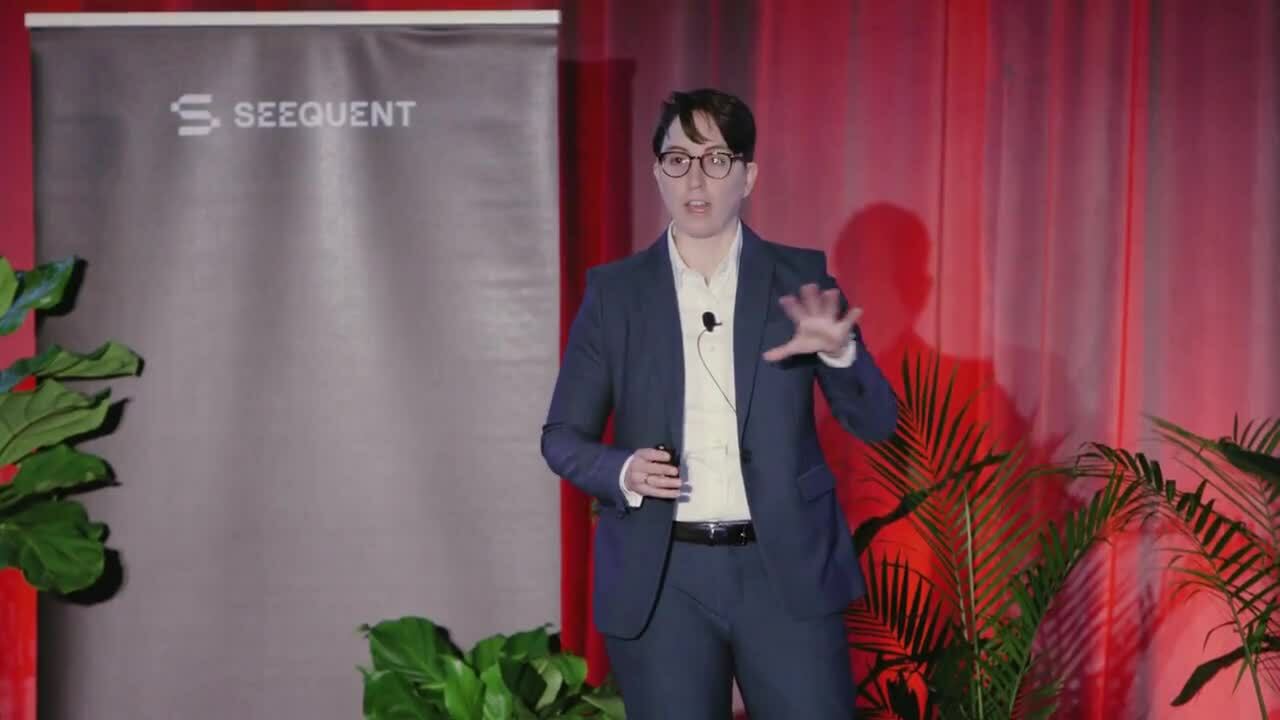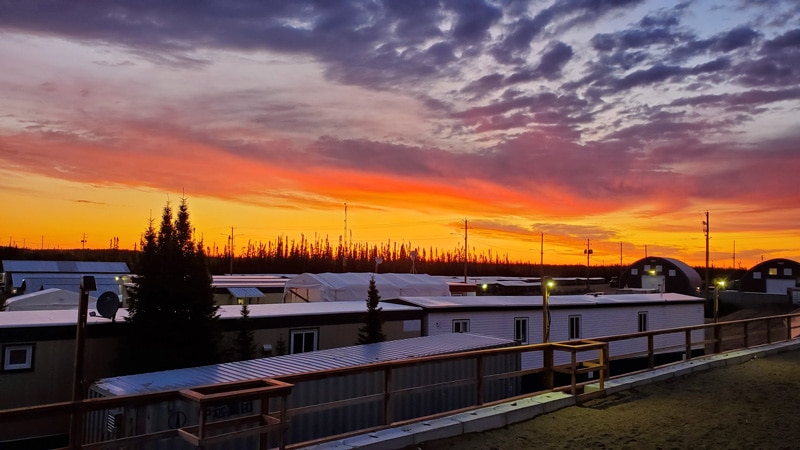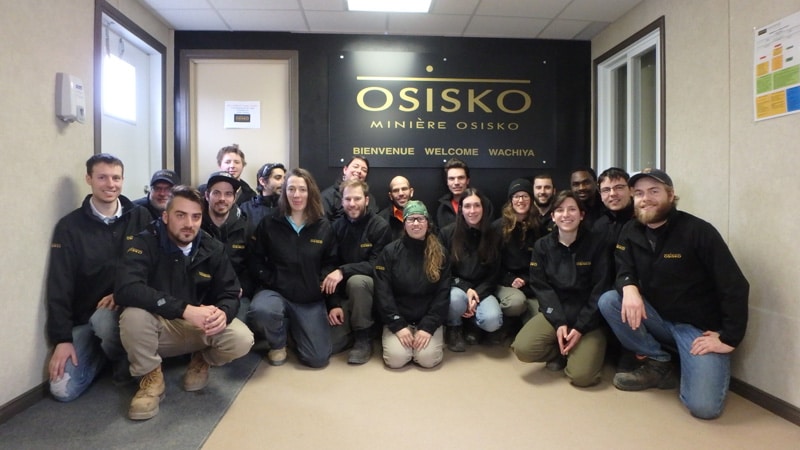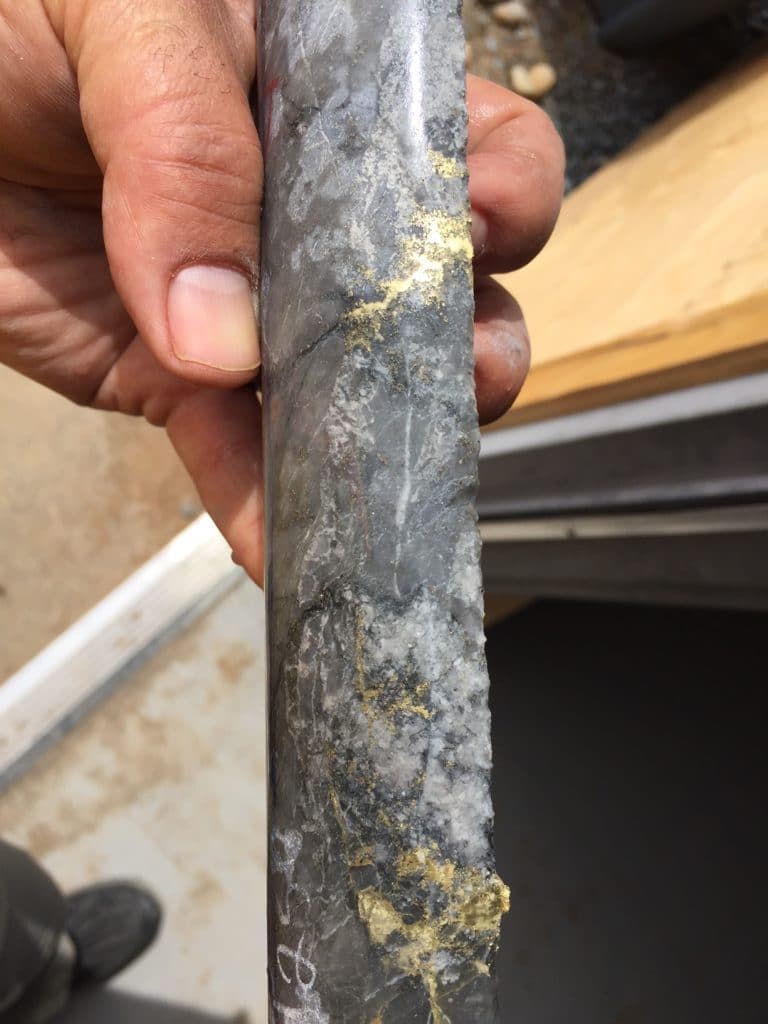
97% clean data with 24 drill rigs constantly running – but, how? Junior exploration company Osisko Mining Inc. gets asked this often. Their team’s agility and accuracy has uncovered major gold resources at their Windfall Project in Quebec.
“About 100 discrete data points per minute are being generated at [the Windfall site]. So, what are we doing with that? How do we capture that data? And how do we communicate that data?” asked Alexandria Marcotte, Vice President Project Coordination, Osisko Mining Inc.
Alexandria presented Osisko’s collaborative team structure at Lyceum Vancouver, Seequent’s user conference.
She revealed how their management was able to gain control over the data – by letting go of control.
No one person could input, interpret, QA/QC, and manage the massive volume of data coming in – much less do it quickly enough to make decisions, test them, and turn around results in the field.
Silos slow decision making so Osisko adopted an agile structure, similar to one used in another constantly evolving industry – tech.
Filtering the data flow
Instead of creating a hierarchy, they chose a horizontal management model. The drill supervisors, planners, modellers, database mangers, special projects team, and head geotechnicians all work in side-by-side offices.
“That horizontal communication among those key positions is where we’re getting those decisions made: Do we move the drill? Is this a good place to go?” Alexandria said.
Agile decision making doesn’t end with their team at the site.
“If the geos come to Toronto with an idea, we have a turnaround time of less than 24 hours to approve the hole or not.”

Osisko never turns their drills off, so their data flow is constant and the risk for errors grows exponentially with it. Information flow between teams had to keep up with the data flooding in.
“It’s not one person making the decision. It’s a collective consciousness that drives where these drills are going.”
Each drill supervisor manages six or seven logging geologists and helps check their results.
“If the loggers have any questions whatsoever about the core that they’re seeing, they have a supervisor right there. There is no core that leaves that core shack without having been reviewed by two people.”
The final check is done by the database manager who oversees the full scope and ensures that minor errors don’t accumulate into major ones.
Employee driven optimisation
Osisko’s projects are in a constant state of evolution. So, when their drill supervisors began writing their own QA/QC scripts – they embraced it.
“When they find an error, they fix it… We didn’t ask them to [start scripting]. But they started to do that on their own. And we give them the space and the time to be able to do that,” said Alexandria.

Instead of fixing their issues alone and informing no one, employees share scripts and insights for the whole team’s benefit.
“They’re writing scripts to check so that this error doesn’t happen again. And they’re sharing it with each other. So, we have employee driven optimisation.”
The geologists have daily check-ins with their supervisors, the supervisors meet with the entire project team to discuss insights and make decisions, and once a day there’s a quick project meeting.
“All of the geologists, all of the geotechnics, anyone who’s touching that data coming out of the drill and going into a database, all of you are in the same room once a day for 15 minutes and you review what everyone else said,” explained Alexandria.
100 new ideas every week
Each team member is also empowered to create their own personal Leapfrog Geo projects, based on an official model from the modeling team.
“What we do is we test drive ideas and we test drive a lot of them. There are 24 drills turning and you have to keep them entertained.”
Their geologists can test new ideas on the most current model before presenting them to others (and without fear of messing up the main model or presenting a ‘bad’ idea). In total, their team tests 60-120 new ideas every week.
“It keeps us agile and reactive… If we hit a good zone, like we did with Triple Lynx, great, we hit it,” Alexandria said, “and within a week, we had 25,000 metres planned on it, we had seven drills on it. So, we can react very quickly to what’s coming out of the field.”
Turning data into gold hits

Their self-managed, self-correcting data system has led to impressive, fast results for Osisko, including “Triple Lynx.”
At this site, through accurate logging, self-checking, and making fast decisions on employees’ target ideas, they uncovered: 47.8 g/t over 12.1 metres, 52.0 g/t over 12.4 metres, and 72.3g/t over 12.7 metres. The gold speaks for itself.
“This employee driven optimisation, this data capture and communication immediately led to discovery of Triple Lynx,” explained Alexandria.
“When we empower our employees, they optimise for us. We don’t need to tell them how to do it, we let them do it on their own. From a communication point of view, it’s that decentralisation of control.”
She ended her Lyceum Vancouver presentation with a takeaway for managers:
“The big takeaway here is really, that in order for management to keep control of the data, you actually have to let go of control of the data.”





